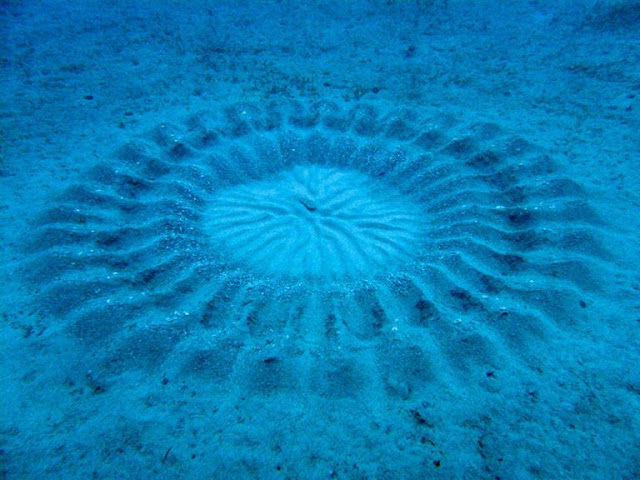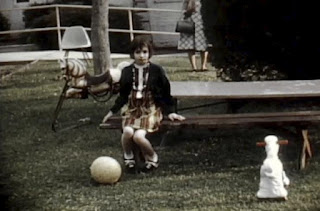The Japanese Pufferfish Becomes Nature’s Greatest Artist During Mating Season
What’s a lonely Japanese pufferfish to do when he’s in search of a mate and needs to make a spectacular first impression? Get artistic, of course.
The mating habits and rituals of certain underwater sea critters have long been looked at with equal parts astonishment and horror, although the argument could easily be made these creatures of the deep might react the same were they privy to what some humans will do in order to secure a partner and procreate.
Sea hares are hermaphrodites that form a sea slug mating chain on the ocean floor and then proceed to get their collective groove on, orgy-style. Seahorses on the fashion front, frequently changing colors while couples perform a snout-to-snout and tail-to-tail happy dance for up to eight hours until the male is fertilized.
Then you have the bizarre anglerfish, the Tim Burton-esque freak of the deep that has the male of the species being born without a digestive system and needing to fuse itself to a rather monstrous female host in order to survive. The poor lad eventually melts off the female, leaving behind a vital appendage that the female uses to fertilize her eggs.
Which makes what the male Japanese pufferfish does to find the perfect gal for him seem adorable in comparison.
In 1995 divers off the coast of Japan’s Amami Ōshima Island began to notice intricately designed six-and-a-half-foot (two-meter) circular patterns on the seafloor. With no explanation as to who or what might have created them, the term ‘crop circle’ began to get tossed around when describing them. Not exactly original, the crop circle name seemed to do the creations justice. Until 2011 that is, when the miscreant behind the circles was finally caught in the act of making one:
The white-spotted pufferfish. A new species within the Torquigener genus called Torquigener albomaculos, to be exact.
In 2011 researchers released a study in Scientific Reports spilling the beans on how the male white-spotted pufferfish, a relatively tiny 5 inches (13 centimeters) in length, would construct a circle with the intent of it becoming a nest. For all intents and purposes, this little guy lets his art do all the talking when it’s mating season.
The male pufferfish uses its fluttering pectoral and caudal fins to show off its artistic side on the seafloor, designing a circular masterpiece decorated with small shells and coral and then filled with carefully positioned and refined geometric rows of sandy sediment ridges that can take up to ten days to create. The center of the circle also features a specially decorated region meant for a female to lay her eggs in, which if she does will have her leaving the area immediately afterward while the male fertilizes the eggs externally and keeps an eye on things for a few days until they hatch. Once they do, the nest is abandoned and is eventually swept away by the current.
Why exactly all the pomp and circumstance necessary for the nest building is still uncertain to researchers. Or, for that matter, what it is that females might be basing their decision to breed with a particular male. Does size matter in the pufferfish world? A larger nest takes more time to construct, which could equate to a stronger male being responsible for it and therefore playing into the classic ‘survival of the fittest’ category that some females might find ideal. Or maybe it’s the design within the circle itself and how the ridges are placed, which might be the equivalent of a woman deciding to be with a man based on his having nice drapes in the dining room.
What researchers did discover during a fluid dynamics test using a half-sized model of a nest is that the peak and valley construction of the inner-circle actually slowed the water current by up to 25 percent in the center where the eggs are laid.
So, this pufferfish might not only be an artist but also an engineer? Talk about making the rest of us look bad.






Comments
Post a Comment